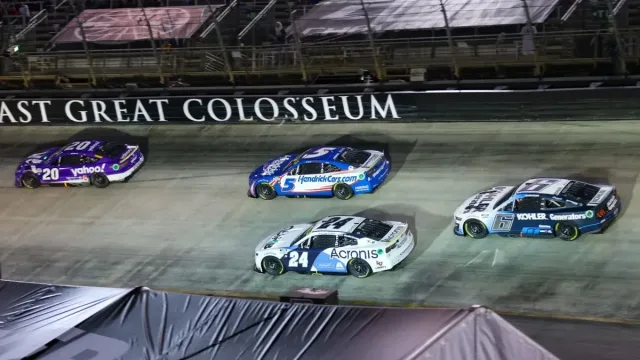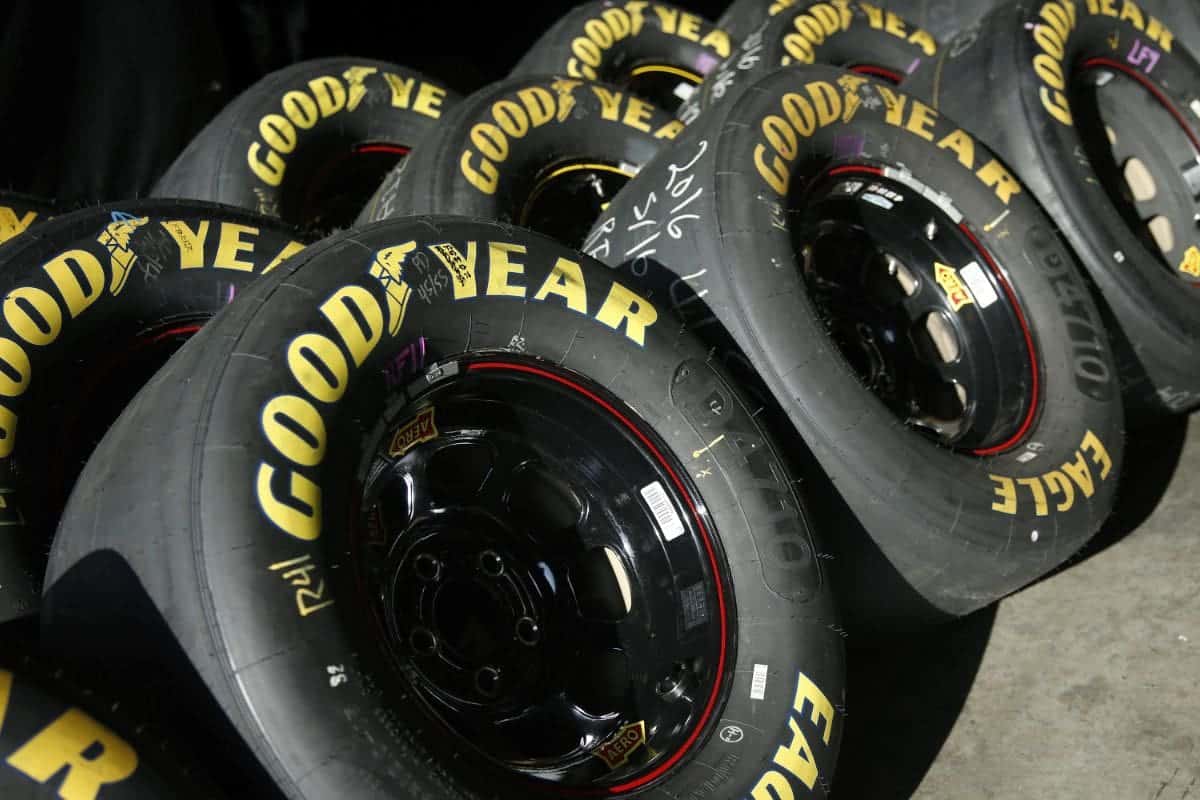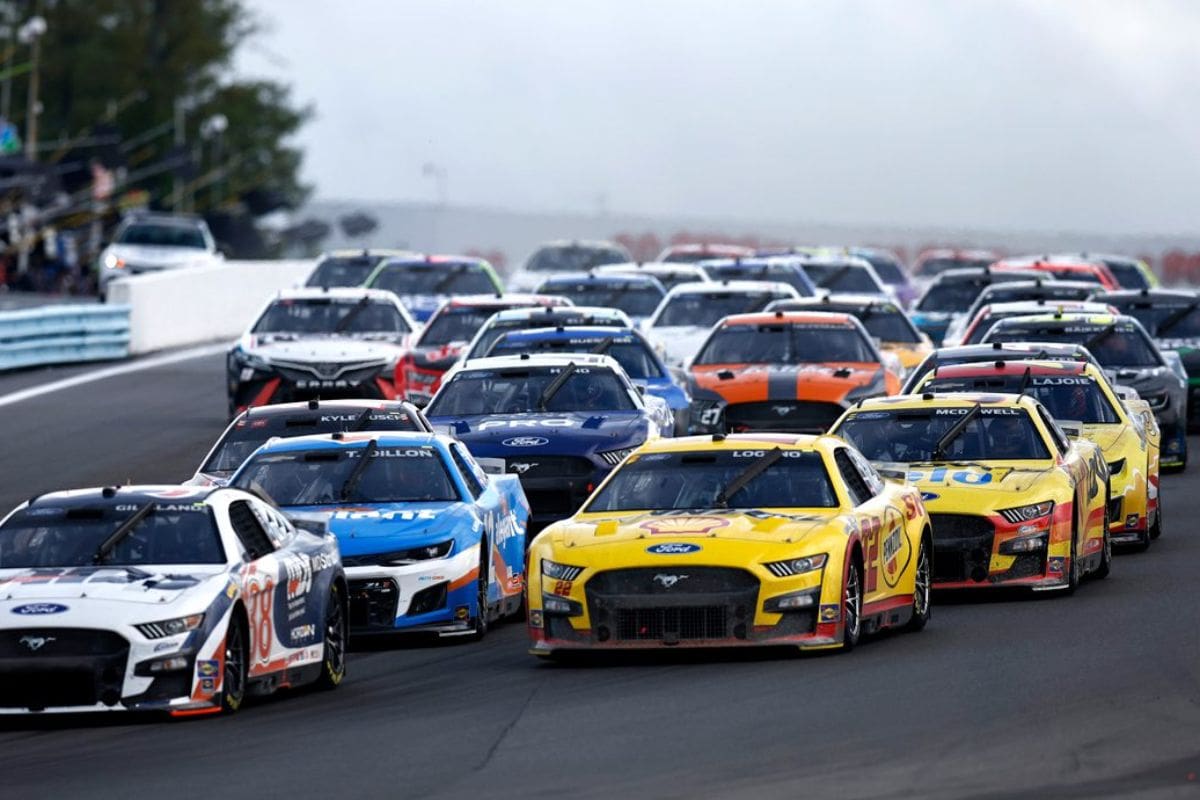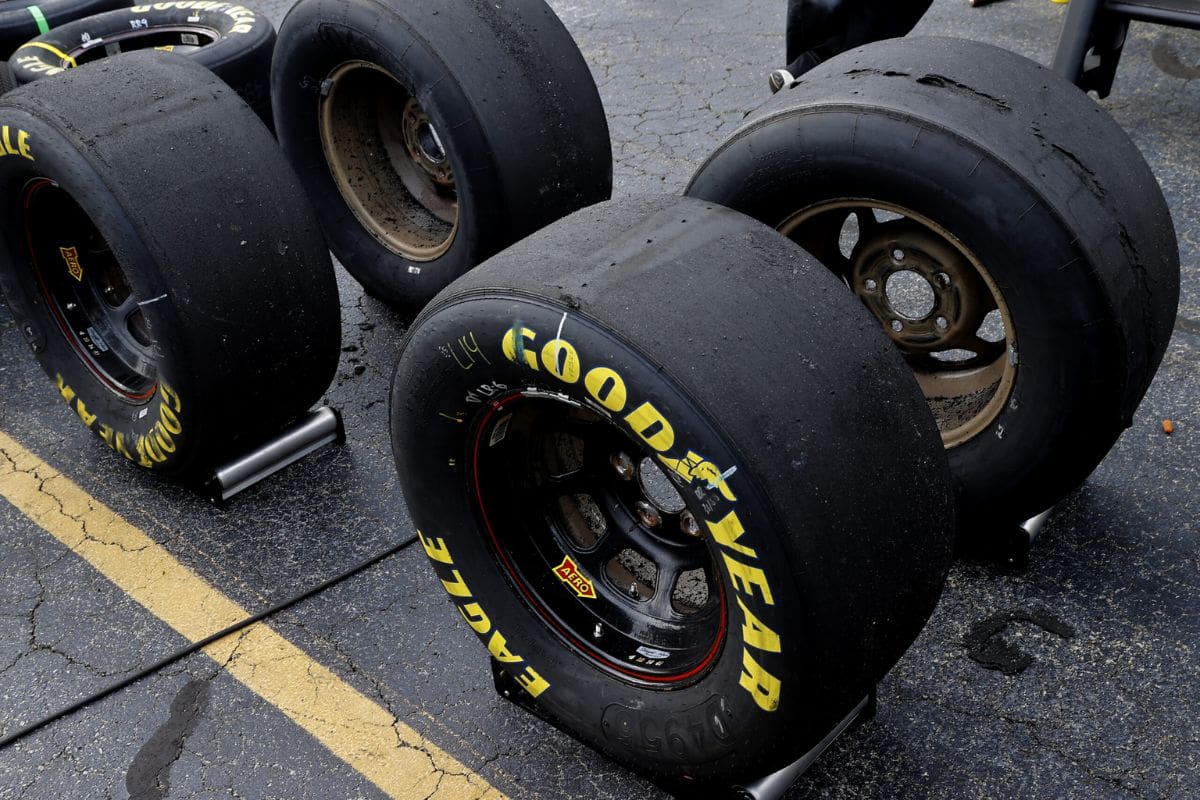Goodyear’s Tire Strategy at Bristol: Goodyear’s recent tire strategy at the Bristol race has sparked considerable discontent among fans and drivers, primarily due to unexpected tire performance issues that compromised both safety and competitive integrity. The alarming wear rates led to an increased number of caution flags, intensifying scrutiny on Goodyear’s ability to deliver reliable products in a racing environment. This situation raises questions about the effectiveness of Goodyear’s current approach and highlights broader implications for NASCAR’s evolving landscape. To understand the underlying factors contributing to this discontent, it’s crucial to examine the historical context and expert insights.
Key Highlights
- Fans expressed outrage at Goodyear’s tire performance during the 2024 Bristol race due to unexpected wear and failures.
- The Next Gen car design has complicated tire strategy, leading to less exciting races and increased safety concerns.
- Goodyear’s historical issues with tire reliability have tarnished its reputation in NASCAR, highlighting the need for product consistency.
- The collaboration between NASCAR and Goodyear is essential to address tire performance concerns and restore fan trust.
- Continuous innovation in tire technology is necessary to maintain competitive parity and meet fan expectations for durability.
Goodyear’s Tire Challenges
In motorsports, one often encounters uncertainties that can greatly influence race outcomes, and Goodyear’s tire strategy at Bristol exemplifies this challenge. The complexities of tire selection are magnified in a racing environment where performance and durability must be balanced. Following the Spring Bristol race, Goodyear’s racing director, Greg Stucker, acknowledged the uncertain nature of their tire package, stating, “It’s the same package. It’s the same tire combination… still a bit of an unknown.” This admission highlights the inherent unpredictability in tire performance, particularly when attempting to replicate favorable conditions.
The Spring race demonstrated an unexpected success due to the use of an alternative tire compound, leading to thrilling competition as drivers pushed their limits. However, this success was not easily transferrable, as the same tire strategy faced notable scrutiny in subsequent races. The challenge lies in the intricate interplay between tire wear, track conditions, and driver strategy. Each race presents a unique set of variables that complicate the predictability of tire performance.
Moreover, the reliance on a single compound raises concerns regarding its adaptability across different racing scenarios. As teams aim for ideal strategy, they confront the limitations imposed by tire performance uncertainties.
The ongoing discourse around Goodyear’s tire challenges emphasizes the need for continuous innovation and adaptation in tire technology, which is essential for achieving competitive parity in NASCAR. Ultimately, mastering tire strategy remains a critical element in the quest for victory on the track.
The Role of NASCAR’s Next Gen Car
Shifting the focus to NASCAR’s Next Gen car reveals considerable implications for tire strategy and general race dynamics. Since its debut in 2022, the Next Gen car has been at the center of numerous controversies, particularly regarding its performance on short tracks like Bristol. Observers have noted that the car’s design, characterized by low horsepower and aerodynamic challenges, has markedly hampered overtaking opportunities.
This limitation has led to a decrease in lead changes, resulting in a lackluster racing experience that has frustrated both fans and drivers similarly. The recent playoff race at Bristol sharply contrasted with the spring event, where dynamic racing was expected. Instead, the Next Gen car’s inability to facilitate competitive passing created a monotonous race, which many deemed unworthy of the playoff stage.
Critics argue that this design flaw not only undermines the excitement of the sport but also complicates Goodyear’s tire strategy. Tires that are optimized for grip and performance become less effective when vehicles cannot effectively utilize them in overtaking maneuvers.
Moreover, the complaints surrounding driver safety, stemming from the car’s initial high-risk injuries, add another layer of complexity to the discussion. As NASCAR seeks to address these multifaceted issues, the interplay between car design and tire performance remains a critical focal point.
Consequently, any adjustments to Goodyear’s tire strategy must consider the Next Gen car’s limitations, as they are inextricably linked to the overall quality of racing in NASCAR.
Expert Opinions on Tire Performance
Expert opinions on tire performance at Bristol reveal a sophisticated understanding of the challenges faced by Goodyear amid the evolving landscape of NASCAR’s Next Gen car. NASCAR expert Eric Estepp articulated that the expectations for tire durability were miscalibrated; while no one anticipated tire failures within 40 laps, the expectation that they could endure 140 laps was also unrealistic.
Estepp contended that Goodyear should not bear the entirety of the blame for Kyle Larson‘s dominance throughout the race, emphasizing that the Next Gen car has inherent design flaws that exacerbate issues like minimal tire wear and limited overtaking opportunities.
“No one expected the tires to blow in 40 laps. But we also didn’t expect them to last 140 laps.”
“Goodyear does not deserve all of the blame for last night’s race – little tire wear, little passing, one driver dominating and leading over 460 laps. That is not Goodyear’s fault – NASCAR and their Next Gen car deserve much of the blame…the car has serious short-track design flaws.” – Estepp
Estepp further noted that Goodyear’s efforts to refine its tire package represent reactive measures rather than proactive solutions. Instances such as the introduction of option tires at Richmond suggest that Goodyear has responded to NASCAR’s calls for intervention, yet the timing of these adjustments during the playoffs raises questions about reliability and predictability in race outcomes.
“They have asked Goodyear to bail them out…and sometimes, they have. the Bristol spring race for example…introducing options tires at Richmond.”
“We’re in the playoffs, there should be some amount of predictability. When you expect fans to travel long distances and spend lots of money on tickets – they should have a decent idea of what the product in front of them is going to look like.” – Estepp
The implications of tire performance extend beyond mere race strategy; they directly affect the sport’s reputation, especially when critical moments coincide with playoff events. As the sport continues to navigate the intricacies of the Next Gen car, expert insights indicate that a thorough approach—considering both tire technology and car design—is vital for restoring fan confidence and enhancing race excitement.
Historical Context of Goodyear’s Challenges
Goodyear’s longstanding relationship with NASCAR has been fraught with challenges, particularly in the domain of tire performance and reliability. The brand’s inability to deliver consistently high-quality tires has raised concerns among drivers and teams similarly. This historical backdrop reveals a pattern of recurring issues that have tarnished Goodyear’s reputation within the racing community. Even amidst attempts to improve tire performance, the company has encountered difficulties that resonate with the dissatisfaction voiced by industry insiders and fans.
As observed during the recent Bristol playoff race, Goodyear’s struggle to replicate successful tire models has prompted considerable discontent. Drivers have expressed doubts regarding the effectiveness of Goodyear’s products, with Estepp stating, “I don’t think we can trust anything Goodyear says.” The ongoing issues, including those seen in the All-Star Race and other key events, indicate a need for Goodyear to reassess its tire strategy.
Past Incidents with Goodyear Tires
The historical challenges faced by Goodyear in NASCAR are emphasized by a series of notable incidents that have raised considerable concerns regarding tire performance.
One particularly striking example occurred during the 2008 Indianapolis Cup race, infamously dubbed the ‘Tiresome 400.’ In this event, right-side tires exhibited alarming wear rates, necessitating caution flags every 10 to 12 laps. Observers noted that rather than rubber, the tires disintegrated into a fine black powder, raising questions about Goodyear’s tire formulation and testing protocols.
Then-General Manager Stu Grant articulated the bewilderment felt within the organization, stating, “The results that we saw on Sunday were certainly unexpected.” He highlighted that the tire model employed had been previously validated, asserting that their testing data from earlier in the year did not indicate any forthcoming issues.
“We went in there with a proven tire, a known quantity. We didn’t see anything different in our test data from April to indicate a problem.”
“The whole combination of that tire, the Car of Tomorrow on that racetrack caused that right rear tire to wear like we had never seen before.” – Grant
Grant’s statement that the combination of the tire, the Car of Tomorrow, and the track conditions led to unprecedented wear highlights a recurring theme in Goodyear’s history with NASCAR.
This incident serves as a critical reminder that Goodyear has struggled with unanticipated tire performance issues for over 15 years. As fans express outrage over the current tire debacles in 2024, it raises the question of whether Goodyear can learn from past missteps and improve their product consistency moving forward.
The hope remains that both NASCAR and Goodyear can collaboratively manage tire performance to bolster the integrity of racing, benefiting teams, drivers, and fans similarly.
News in Brief: Goodyear’s Tire Strategy at Bristol
The backlash surrounding Goodyear’s tire performance at the 2024 Bristol race highlights a critical crossroads for the company in addressing ongoing challenges. Issues of tire wear and safety not only affect race outcomes but also jeopardize the brand’s reputation within motorsport. As NASCAR’s Next Gen car continues to evolve, it becomes imperative for Goodyear to innovate and improve tire quality. The incident serves as a reminder of the necessity for consistent performance to maintain the integrity of competitive racing.
ALSO READ: NASCAR Insider Calls Out Goodyear: Why Are Tires Acting So Differently?



